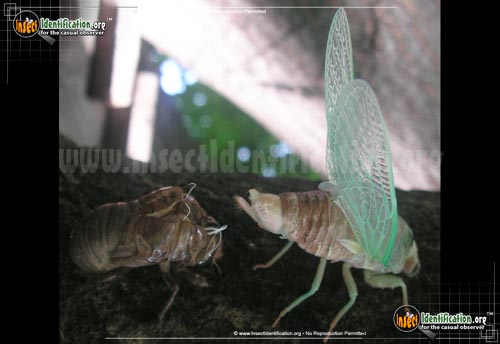

It is a common misperception that adult cicadas do not feed, but the fact is they have all the mouthparts needed to extract liquid from plants, and they’re not afraid to use them. (Scientists aren’t sure exactly how long, and the span probably varies according to conditions affecting the cicada’s development.) Some annual cicadas emerge as adults each year because their generations are staggered, which sets them apart from periodical cicadas, generations of which mature in synch, on 13- and 17-year cycles. These nymphs drop to the ground and burrow down to find a root they can latch onto for nourishment, and there they remain, probably for something like two to five years. They start out as tiny nymphs, which hatch from eggs laid in tree branches. The fact that dog day cicadas are also called annual cicadas sometimes generates confusion about their life cycle, but do they live for more than a year. The earliest fossil record of a cicada dates back 65 million years.Ī cicada in the grip of a cicada killer wasp The song is often compared to the whirring of a circular saw, although I think that comparison ought to be reversed, since cicadas have been around far longer than power tools. This means the song of a cicada perched your shoulder would be plenty loud to damage your hearing. The singing of dog day cicadas is one of the loudest insect noises on earth, sometimes exceeding 110 decibels up close. Other people know cicadas by the name “harvestfly,” which derives from the fact that they emerge as adults at the same time crops are maturing. But the name locust is more properly applied to certain grasshoppers. Some people call these and other cicadas locusts, a name that was first applied to them by settlers of European extraction for whom the emergence of large broods called to mind the plagues of the Bible. At rest their clear, heavily veined wings close over the back like a pitched roof and add another half inch to their length. These cicadas have bulky, bodies about an inch and a half long that are dark on top with green and white markings, and entirely white below. and Canada, one that has also adapted well to life in urban and suburban settings where enough trees grow to support it. If you choose to contribute, you may go to and click on the yellow “donate” button.I say, “dog day cicada” I mean the insect that goes by the two-part scientific name “Tibicen canicularis,” which is the most common species of forest dwelling cicada that occurs in the eastern U.S. Naturally Curious is supported by donations. Mating usually takes place in the canopy, and therefore rarely seen.) (Thanks to Wallie Hammer for taking and providing today’s photograph.

After hatching, the nymphs will drop to the ground and burrow into it with their shovel-like front legs. Within two weeks mating takes place, eggs are laid in slits of live branches and the adults die. After their exoskeleton dries, the adult cicadas (also called imagoes) head for the canopy, and males commence “singing” to attract a mate.
Dog day cicada full#
They climb a tree, split and emerge from their exoskeleton, or outer skin, and pump their wings full of fluid. We associate it with the hot, humid “dog days” of July and August.Īnnual cicadas emerge from the ground (where they have been feeding off of the sap of trees through the trees’ roots for two to four years) every year as nymphs.

High up in trees most males are vibrating their abdominal tymbals (drum-like organs) in order to woo female cicadas with their “song.” Thanks to an abdomen that is relatively hollow, the sound is intensified, and very audible to human ears as a high-pitched whining drone, somewhat resembling a buzz saw. Dog-day Cicadas Emerging, Courting, Mating and Laying EggsĪdult annual cicadas, including the pictured Dog-day Cicadas, have emerged from their subterranean dwellings.


 0 kommentar(er)
0 kommentar(er)
